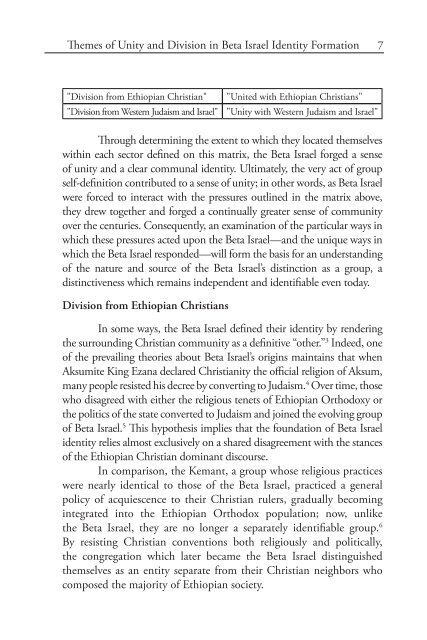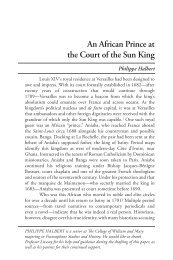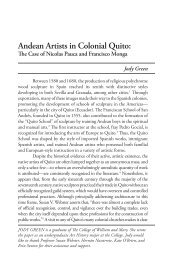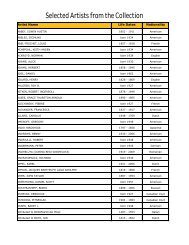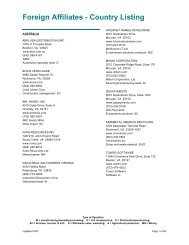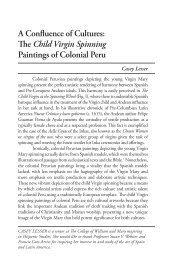Themes of Unity and Division in Beta Israel Identity Formation
Themes of Unity and Division in Beta Israel Identity Formation
Themes of Unity and Division in Beta Israel Identity Formation
You also want an ePaper? Increase the reach of your titles
YUMPU automatically turns print PDFs into web optimized ePapers that Google loves.
<strong>Themes</strong> <strong>of</strong> <strong>Unity</strong> <strong>and</strong> <strong>Division</strong> <strong>in</strong> <strong>Beta</strong> <strong>Israel</strong> <strong>Identity</strong> <strong>Formation</strong><br />
"<strong>Division</strong> from Ethiopian Christian" "United with Ethiopian Christians"<br />
"<strong>Division</strong> from Western Judaism <strong>and</strong> <strong>Israel</strong>" "<strong>Unity</strong> with Western Judaism <strong>and</strong> <strong>Israel</strong>"<br />
Through determ<strong>in</strong><strong>in</strong>g the extent to which they located themselves<br />
with<strong>in</strong> each sector def<strong>in</strong>ed on this matrix, the <strong>Beta</strong> <strong>Israel</strong> forged a sense<br />
<strong>of</strong> unity <strong>and</strong> a clear communal identity. Ultimately, the very act <strong>of</strong> group<br />
self-def<strong>in</strong>ition contributed to a sense <strong>of</strong> unity; <strong>in</strong> other words, as <strong>Beta</strong> <strong>Israel</strong><br />
were forced to <strong>in</strong>teract with the pressures outl<strong>in</strong>ed <strong>in</strong> the matrix above,<br />
they drew together <strong>and</strong> forged a cont<strong>in</strong>ually greater sense <strong>of</strong> community<br />
over the centuries. Consequently, an exam<strong>in</strong>ation <strong>of</strong> the particular ways <strong>in</strong><br />
which these pressures acted upon the <strong>Beta</strong> <strong>Israel</strong>—<strong>and</strong> the unique ways <strong>in</strong><br />
which the <strong>Beta</strong> <strong>Israel</strong> responded—will form the basis for an underst<strong>and</strong><strong>in</strong>g<br />
<strong>of</strong> the nature <strong>and</strong> source <strong>of</strong> the <strong>Beta</strong> <strong>Israel</strong>’s dist<strong>in</strong>ction as a group, a<br />
dist<strong>in</strong>ctiveness which rema<strong>in</strong>s <strong>in</strong>dependent <strong>and</strong> identifiable even today.<br />
<strong>Division</strong> from Ethiopian Christians<br />
In some ways, the <strong>Beta</strong> <strong>Israel</strong> def<strong>in</strong>ed their identity by render<strong>in</strong>g<br />
the surround<strong>in</strong>g Christian community as a def<strong>in</strong>itive “other.” 3 Indeed, one<br />
<strong>of</strong> the prevail<strong>in</strong>g theories about <strong>Beta</strong> <strong>Israel</strong>’s orig<strong>in</strong>s ma<strong>in</strong>ta<strong>in</strong>s that when<br />
Aksumite K<strong>in</strong>g Ezana declared Christianity the <strong>of</strong>ficial religion <strong>of</strong> Aksum,<br />
many people resisted his decree by convert<strong>in</strong>g to Judaism. 4 Over time, those<br />
who disagreed with either the religious tenets <strong>of</strong> Ethiopian Orthodoxy or<br />
the politics <strong>of</strong> the state converted to Judaism <strong>and</strong> jo<strong>in</strong>ed the evolv<strong>in</strong>g group<br />
<strong>of</strong> <strong>Beta</strong> <strong>Israel</strong>. 5 This hypothesis implies that the foundation <strong>of</strong> <strong>Beta</strong> <strong>Israel</strong><br />
identity relies almost exclusively on a shared disagreement with the stances<br />
<strong>of</strong> the Ethiopian Christian dom<strong>in</strong>ant discourse.<br />
In comparison, the Kemant, a group whose religious practices<br />
were nearly identical to those <strong>of</strong> the <strong>Beta</strong> <strong>Israel</strong>, practiced a general<br />
policy <strong>of</strong> acquiescence to their Christian rulers, gradually becom<strong>in</strong>g<br />
<strong>in</strong>tegrated <strong>in</strong>to the Ethiopian Orthodox population; now, unlike<br />
the <strong>Beta</strong> <strong>Israel</strong>, they are no longer a separately identifiable group. 6<br />
By resist<strong>in</strong>g Christian conventions both religiously <strong>and</strong> politically,<br />
the congregation which later became the <strong>Beta</strong> <strong>Israel</strong> dist<strong>in</strong>guished<br />
themselves as an entity separate from their Christian neighbors who<br />
composed the majority <strong>of</strong> Ethiopian society.<br />
7


